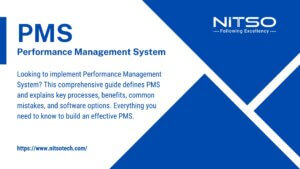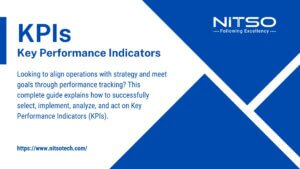What approach is best for driving employee performance: continuous performance management or periodic appraisals? Organizations invest substantial time and resources into monitoring and managing staff output. However, how you optimize employee productivity requires strategic decisions. Should the focus be on ongoing development through constant goal-setting, coaching and feedback? Or does an annual review process sufficiently evaluate past performance and guide future improvements? What are the tradeoffs between these options?
Performance management and appraisals share similarities but have distinct differences in purpose, methodology and results. Understanding these nuances is key to determining which strategy (or combination) best fits your organizational needs and culture. This article examines the core elements of each approach, their pros and cons, and considerations for choosing between them. Discover how to leverage either process to enhance workforce performance.
Table of Contents
Key Differences Between Performance Management and Appraisals
Performance management and performance appraisals are two important human resource processes related to monitoring and improving employee job performance. However, they have some key differences in their focus, frequency, relationship to employees, methods used, and outcomes.
The table below compares key aspects of performance management and performance appraisals in more detail. This overview will help clarify the differences between these two critical but distinct performance optimization processes.
| Performance Management | Performance Appraisal | |
|---|---|---|
| Definition | Performance management is an ongoing process of setting goals, measuring progress, giving feedback, and taking action to improve employee performance. | Performance appraisal is the formal evaluation of an employee’s job performance over a specific period of time, often annually. |
| Focus | Focuses on the future – setting goals and development plans. Seeks to improve employee performance going forward. | Focuses on the past – evaluating performance over the last review period. Assesses what has already occurred. |
| Frequency | Continuous process throughout the year. | Typically conducted once or twice per year. |
| Relationship | Collaborative. Managers and employees work together. | Collaborative. Managers and employee work together. |
| Methods | Coaching, feedback, goal setting, and employee development. | Performance rating, written review, meeting with manager. |
| Outcomes | Improved employee productivity and development. | Documentation of employee strengths and weaknesses. Basis for compensation changes. |
| Key Elements | – Setting clear goals – Providing ongoing feedback and coaching – Developing performance improvement plans – Linking performance to rewards | – Completing performance review forms – Holding formal appraisal meetings – Providing performance ratings – Justifying pay decisions |
The Basics of Performance Management
Performance management is an ongoing process that ensures employees are working towards organizational goals and developing their skills. The key elements of an effective performance management process include:
- Goal Setting: Align individual employee goals with organizational objectives. Set specific, measurable, achievable, relevant and time-bound (SMART) goals.
- Performance Planning: Identify the skills, knowledge and resources required for the employee to achieve their goals. Create development plans.
- Ongoing Feedback: Provide regular informal feedback on performance. Discuss accomplishments, areas for improvement, and progress towards goals.
- Formal Reviews: Conduct formal performance reviews periodically (often annually) to evaluate employee performance more comprehensively. Provide feedback and record key items in the employee’s personnel file.
- Coaching: Work collaboratively with employees to provide guidance, resources, and advice to improve performance. Help remove obstacles hindering goal achievement.
- Rewarding Good Performance: Link rewards like compensation increases, bonuses and recognition to the achievement of goals and high performance.
- Addressing Performance Gaps: If an employee struggles, determine the issues and create performance improvement plans with training, coaching and clear expectations.
An effective performance management system aligns employee performance with the organization’s objectives while developing the employee’s capabilities and motivating high performance. Implemented well, it is a continuous cycle that enhances individual and organizational success.
The Basics of Performance Appraisals
Performance appraisals are periodic reviews and evaluations of an employee’s job performance over a recent period of time, often the past year. The key aspects of performance appraisals include:
- Preparation: The manager collects data, feedback and documentation about the employee’s performance. The employee also prepares a self-assessment.
- Meeting: The manager and employee meet formally to discuss the appraisal. The manager provides feedback and ratings based on the employee’s accomplishments.
- Evaluation: The manager evaluates the employee’s work quality, skills, behaviours, and achievements based on preset criteria and metrics. Ratings are assigned.
- Documentation: The appraisal meeting and ratings are formally documented and recorded. The appraisal becomes part of the employee’s personnel file.
- Goal-setting: The manager and employee discuss areas for improvement and set goals for the next review period.
- Alignment with Rewards: Appraisal ratings are used to guide decisions about compensation changes, promotions, bonuses or other rewards.
- Development Planning: Training needs and development plans are created to strengthen skills and address performance gaps.
- Follow-up: The manager follows up periodically before the next formal appraisal to provide feedback on improvement progress.
Performance appraisals provide a formal process to evaluate employees, guide rewards, develop skills, and document performance data. They offer a valuable periodic review when combined with regular informal feedback and coaching.
Measuring Performance Management Effectiveness
Here are some key ways to measure the effectiveness of performance management:
- Goal achievement: Assess the percentage of employee, team, and organizational goals that are achieved during the performance period. High goal achievement indicates effective performance management.
- Skill development: Measure employee participation in training and development programs. Growth in job-related skills and certifications demonstrates positive outcomes.
- Ongoing feedback: Evaluate whether managers and employees are holding regular check-ins and discussions to provide feedback in real-time. The frequency of conversations can be tracked.
- Performance ratings: Analyze the distribution of scores from formal performance evaluations. Well-differentiated scores show the appraisal system is working.
- Employee surveys: Conduct annual surveys to track employee satisfaction with goal-setting, feedback, development opportunities and the review process. High scores indicate engagement.
- Productivity growth: Compare indicators like revenue, units produced, cases processed, and tickets closed month-to-month or year-over-year. Rising productivity suggests effective performance management.
- Manager participation: Assess whether managers are completing appraisals on time, having quality discussions, providing developmental actions and documenting properly. High participation shows commitment.
- Compensation alignment: Evaluate whether pay raises, bonuses and promotions connect clearly to formal appraisal ratings and documented performance. Strong alignment demonstrates robust processes.
- Retention and engagement: Measure key metrics like employee retention rates, absenteeism and organizational commitment. Improving trends suggests that performance management is working.
Common Performance Appraisal Strategies
Some of the most common performance appraisal strategies and methods:
- Rating scales – The manager rates performance on factors like quality, quantity, timeliness, etc. using a numeric scale.
- Checklists – Checklists of behaviours or accomplishments allow managers to mark those demonstrated by the employee and provide comments.
- Critical incidents – Keeping records of positive and negative performance events or observations throughout the year to provide behavioural examples.
- Management by Objectives (MBO) – The manager and employee mutually set objectives, and then evaluate results against the agreed goals.
- Ranking – Ranking employees relative to one another from highest to lowest performance. Comparative ranking is controversial and is now rarely used.
- Forced distribution – Requires managers to fit employees into a predefined performance distribution, often based on a bell curve. Can foster unhealthy competition.
- Behaviorally Anchored Rating Scales (BARS) – Uses behaviour examples as anchors to illustrate different performance levels on a rating scale. Provides clarity.
- 360-degree feedback – Collects ratings and feedback from the employee, manager, peers, subordinates, and customers to provide a rounder view.
- Self-appraisals – Employees provide a self-assessment of accomplishments, development needs, and goals. Valuable input.
The best approaches align with organizational culture and provide quantitative measures, qualitative insights, and employee input into the process.
Which does your business need: performance management or performance appraisal?
Here are some key considerations when determining whether your business needs performance management or performance appraisals:
- What are your objectives? Are you looking to align employee performance to long-term business goals or simply assess past performance and compensation?
- How invested are managers in developing their teams? Can you rely on them for frequent coaching and feedback sessions?
- What kind of culture do you have? Is it collaborative or more top-down between managers and employees?
- Do you aspire to develop employees over the years or just evaluate them annually?
- How much time can managers dedicate to the process? Is occasional or frequent involvement more feasible?
- What HR capabilities do you have? Can you train for and implement a robust continuous system?
- What resources are available? Can you invest in integrated software and provide training?
- How will you use outcomes? Are you looking to document reviews or actively enhance performance?
- How will you measure success? By comp decisions, goal achievement, development progress, retention?
Consider these factors along with your business strategy. Look at what your talent competitors are doing too. Involve managers and employees for best buy-in. Choose the approach that best fits your culture, capabilities and objectives.
Conclusion
In summary, performance management and appraisals both add value but serve different primary purposes. Ongoing performance management is superior for enhancing employee development, alignment, productivity and retention over the long-term. Annual appraisals are better suited for one-time evaluations and documentation.
Organizations should choose based on their goals, culture, resources and capabilities. Often a combination is most effective. The foundation should be continuous, forward-focused performance management centred on progress, development and communication. This requires commitment but yields significant rewards in building a high-performing, engaged workforce.








0 Comments